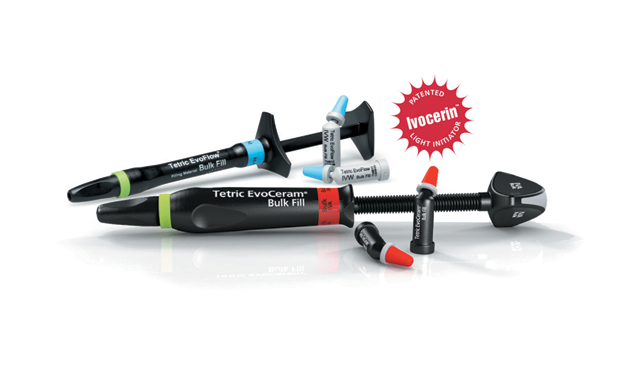I Use That: Tetric EvoCeram Bulk Fill and Tetric EvoFlow Bulk Fill from Ivoclar Vivadent
One dentist on the benefits of using these products together.

Dr. Jason Olitsky, CEO of Smile Stylist, has used Ivoclar Vivadent’s Tetric Evo Line of products for years.
He started with Tetric EvoCeram and Tetric EvoFlow, and though he was happy with those materials, decided to try Tetric EvoCeram® Bulk Fill and Tetric EvoFlow® Bulk Fill once they were available. He liked the idea of the simplified technique the bulk fill materials offered and that he could easily incorporate them into his armamentarium.
The bulk fill materials soon became his go-to options for posterior restorations. Here, he tells us why.
What Dr. Jason Olitsky says about Tetric EvoCeram Bulk Fill and Tetric EvoFlow Bulk Fill
I used Tetric EvoFlow with Tetric EvoCeram Bulk Fill before Tetric EvoFlow Bulk Fill was available because I like to use a flowable liner under complete restorations. Then Ivoclar introduced Tetric EvoFlow Bulk Fill, which I love. Now, I use the two bulk fill products together in two increments. I can fill a 4 mm depth of cure with Tetric EvoFlow Bulk Fill and 4 mm with Tetric EvoCeram Bulk Fill. With 8 mm, I can fill just about anything in two layers.
Some clinicians subscribe to a flowable liner as part of their posterior restorations and some go right to the restorative. You could choose to use only the Tetric EvoCeram Bulk Fill as a single restorative material or use it as a finishing layer. I subscribe to the flowable liner, but I’ve always used it sparingly because I was worried about shrinkage stress on the teeth. With Tetric EvoFlow Bulk Fill, I can place a layer up to 4 mm thick and have a void-free restoration on the X-ray. It’s also self-adapting and flows against the proximal bands and walls of the cavity preparation’s sealing margins.
Trending article: Ivoclar Vivadent unveils Digital Denture at IDS
These materials offer many benefits for our patients. A lot of other posterior bulk fill restoratives finish gray or dark, which isn’t esthetic. Tetric EvoFlow Bulk Fill features Aessencio technology, or the ability to increase opacity post light polymerization. The initial enamel-like translucency allows deeper penetration of light during polymerization and hence high depth of cure, but at final cure it’s the same opacity as dentin. So when you place the liner, you’re replacing the dentin layer of the tooth. Then when you put the enamel layer on top with Tetric EvoCeram Bulk Fill, you get a more esthetic result.
Patients are usually happy if the restoration isn’t grey or brown and is close to their natural tooth color. With Tetric EvoCeram Bulk Fill, you can select from three universal shades and get really close to the patient’s natural dentition. The material has a chameleon-like effect with nice blending at the margins. Patients can’t see the fillings, which makes them happy.
Timing is another benefit. Using any type of bulk fill takes less chair-side time. I’d say it saves me several minutes per restoration. It also minimizes sensitivity for the patient. Using the right bulk fill material enables us to decrease shrinkage stress.
Patients also get more predictable results. In dentistry, one of the things we want as providers is predictability. We want to know the restoration will look good and that the patient will feel good. Bulk fill products give you that predictability.
Tetric EvoCeram Bulk Fill is easy to shape and polish and offers plenty of working time under ambient light. You have extra time to shape and sculpt the composite before the final cure.
We do a lot of Class II fillings. That’s the bread and butter of dentistry. When we walk into the room to look at radiographs at the six-month recall, we want to give ourselves a pat on the back for providing our patients with the best work possible. These two materials, when we use them together, give us void-free restorations and nice margins. It makes you feel good as a dentist.
ACTIVA BioACTIVE Bulk Flow Marks Pulpdent’s First Major Product Release in 4 Years
December 12th 2024Next-generation bulk-fill dental restorative raises the standard of care for bulk-fill procedures by providing natural remineralization support, while also overcoming current bulk-fill limitations.